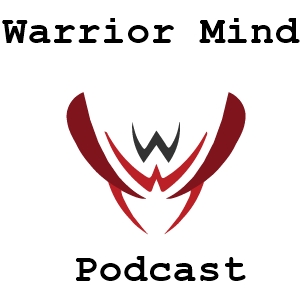What You Can Learn By Doing Murph: Warrior Mind Podcast #389

Over four years and going strong! With over 500,000 downloads from over 9 countries and 5 continents’…. this is the Warrior Mind Podcast.
this is the Warrior Mind Podcast.
In this episode of the Warrior Mind Podcast I’m going to talk about the grueling WOD Murph and what you can learn from it, or similar experiences.
Murph!
It’s that time of the year again when we honor Michael P. Murphy by participating in Murph. I’m going to presume you know what Murph is…if not, do a quick search for Murph WOD.
Based on my training in NLP, sports psychology and mental strength, as well as from conversations with Navy SEAL’s, other Crossfitter’s and Olympic athletes, I want to provide some tips that will help you not only survive Murph, but dare I say, enjoy it!
Taken from a big picture perspective, Murph can be VERY daunting. The first thing that usually starts here is negative self-talk, i.e. “how am I ever going to do this”, “this is going to be so hard”, “I hope I survive this.” The mind and the body are always connected, so any negative self-talk is going to be energy draining.
Enjoy this podcast on what you can learn by doing Murph.
Podcast: Play in new window | Download (14.0MB)
Subscribe: RSS
Step 1: Break It Down
To help with the overwhelm, break it down into manageable pieces. This will depend on how you’re going to do Murph, “traditional”, i.e. sequentially or in chunks. Let me explain…if you’re going to break it down into chunks, it might look like:
- Mile run then
- 10 sets of
- 10 pullups
- 20 pushups
- 30 air squats then
- Mile run
An example of the traditional might would be:
- Mile run then
- 100 pullups
- 10 at time
- 200 pushups
- 20 at time
- 300 air squats then
- 30 at time
- Mile run
The key here is to create a strategy BEFORE you begin. Just “going for it” is going to cause significant issues and pain.
Step 2: Set 3 Goals
Then next step is to set three goals for finishing. Yup…you read right…three goals.
Why?
It’s our human nature to give as much energy to up to the “finish line” but not through it. So, the three goals help you run THROUGH the finish line. The three goals are:
- Target
- Reach
- Stretch
This might look like:
- Target = 60 minutes
- Reach = 55 minutes
- Stretch = 48 minutes
Your focus will be on the stretch. This is an example of the philosophy, “Shoot for the eagle, you bag the pheasant and you won’t eat crow.” Knowing that we give as much energy to get to the finish line, but not through it, you’ll be aiming for 48 minutes. So, if you make it on 55 minutes, you still beat your target!
Step 3: Create Micro Goals
Looking at the nontraditional way of doing Murph these micro goals might look like:
- Mile run = 9 minutes
- 10 Sets:
- 1st = 12-minute mark
- 5th = 23-minute mark
- 10th = 41-minute mark
- Mile run = 14 minutes
Finish at 55 minutes!
By creating micro goals, you have something specific to focus on each step of the way. This is a powerful mind tool from the Navy SEAL’s. Micro goals keep you moving towards your bigger goal.
Step 4: Positive Self-Talk
From the time you wake up, to the time AFTER Murph, you MUST be monitoring and correctly any self-limiting talk, i.e. instead of “I’m feeling nervous” change it to “I’m felling excited.” This may sound hard to do but think about it. The energy you feel when you’re nervous is the exact same energy you feel when you’re excited. You simply need to change the label of it.
During the execution of the movements you also want to create a metronome in your head. You want to create a personal rhythm in working through these chunks. Add some positive self-talk to the beat like “I got this”, will help you stay focused on the task at hand.
You may have noticed in the first sentence of this section I mentioned …” AFTER Murph.” You see, how you emotionally handle finishing will dramatically affect how you attempt future hero WOD, including Murph. Instead of “I sucked at this” replace it with “I finished” or “I did want I could today.”
Our self-talk before, during and after any grueling WOD can either set us up for peak performance or crush us from attempting another hero WOD.
There you have it. A few tips to help survive and thrive Murph. No go out there, have fun and remember WHY we are doing this.
Subscribe to the Warrior Mind Podcast HERE.


